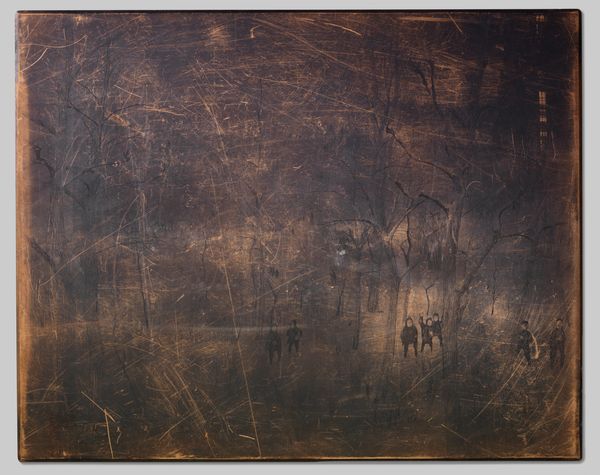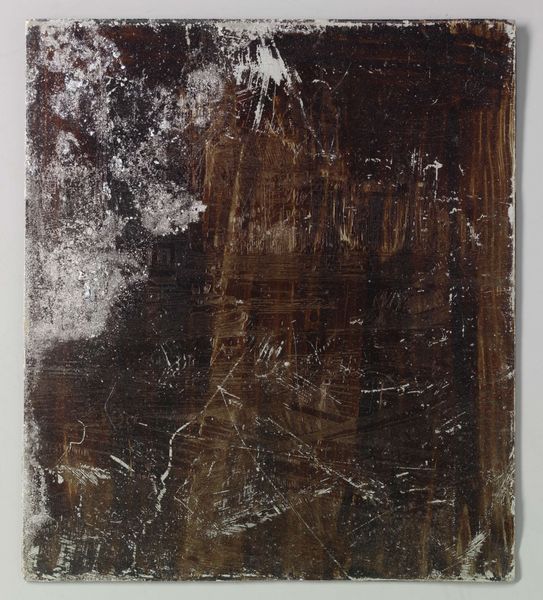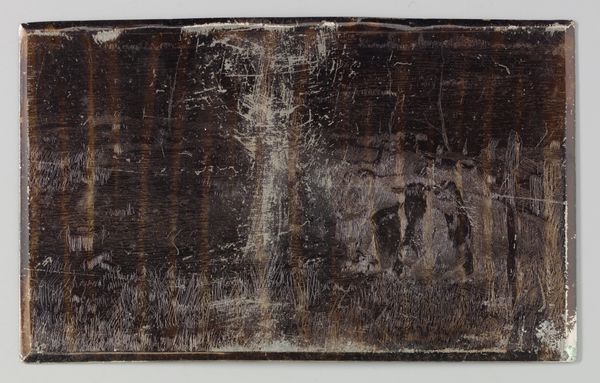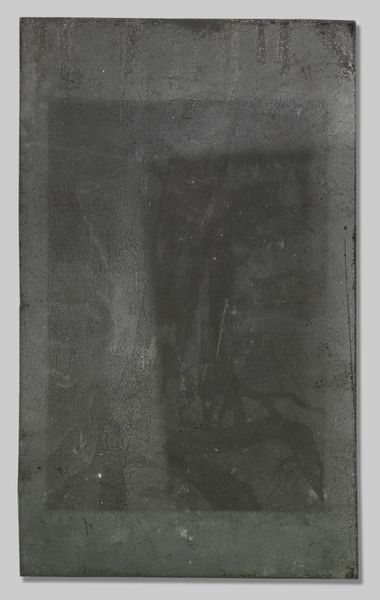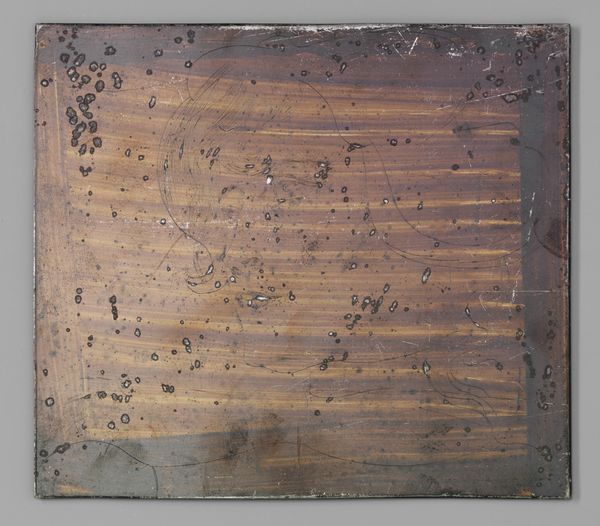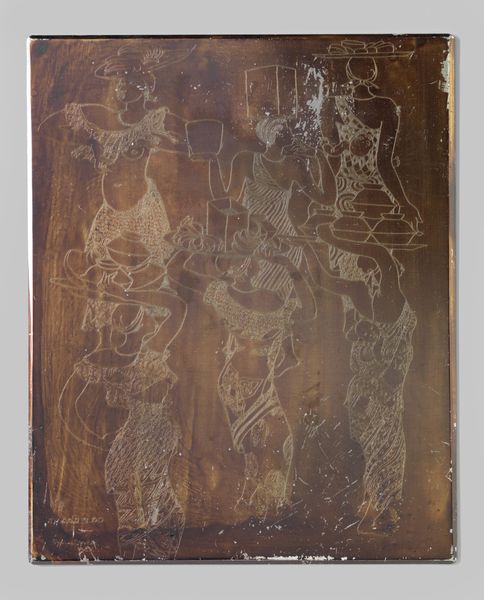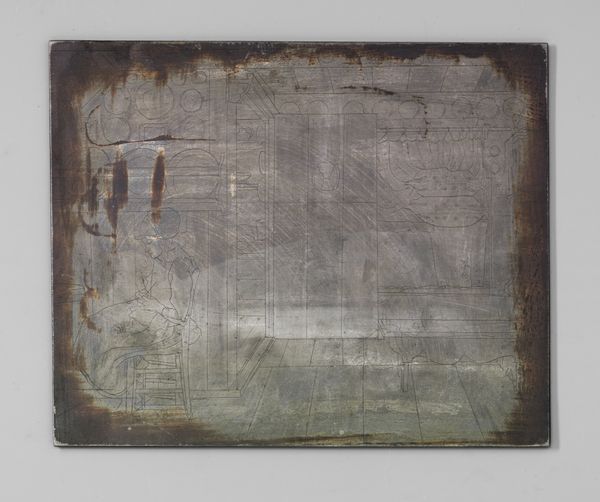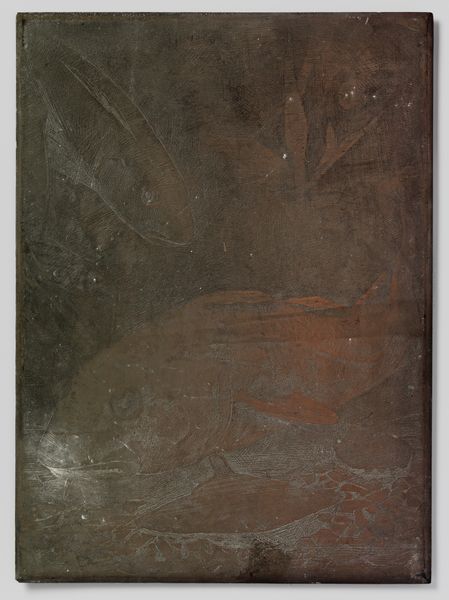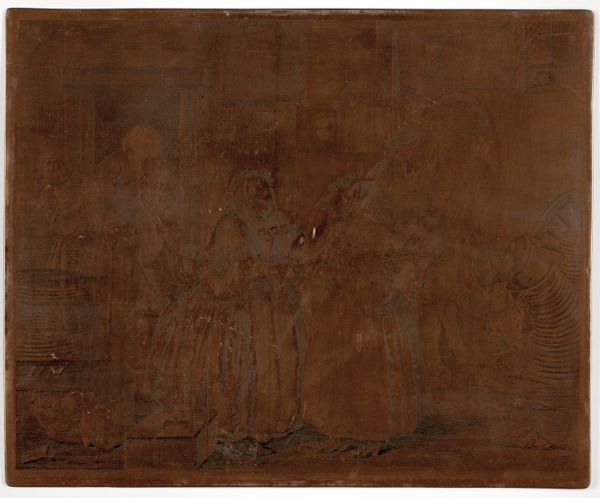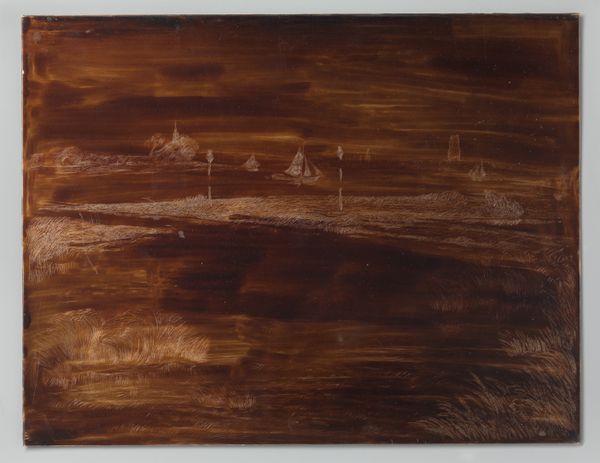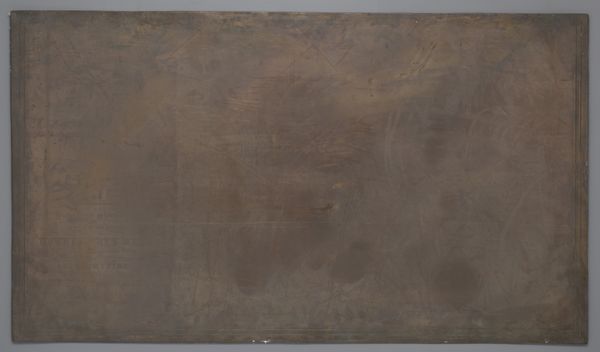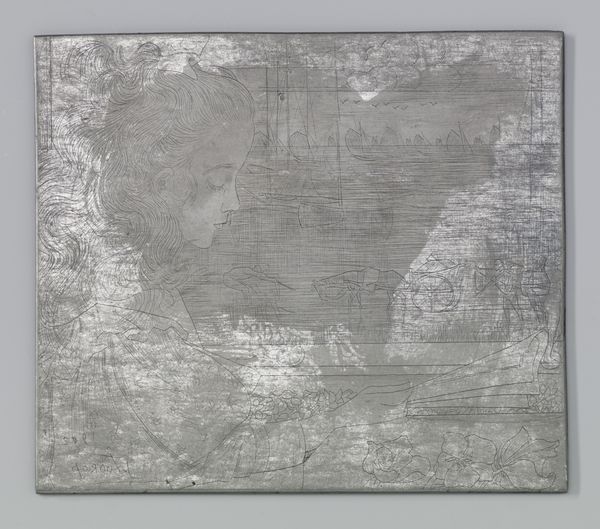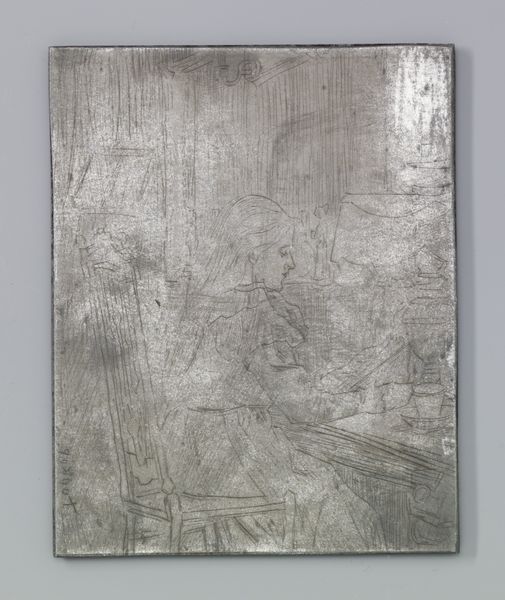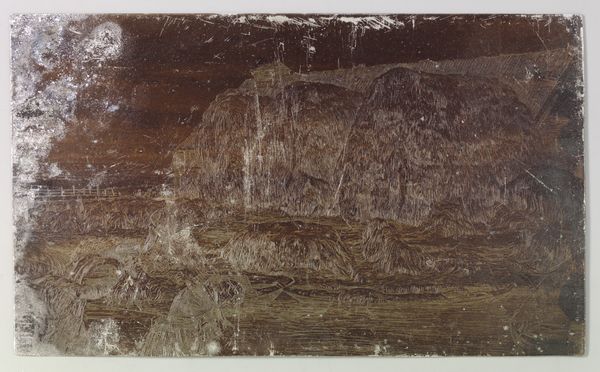
drawing, impasto
#
portrait
#
drawing
#
figuration
#
impasto
#
line
Dimensions: height 180 mm, width 242 mm
Copyright: Rijks Museum: Open Domain
Curator: Standing before us is "Portret van de componist H. van den Berg," a drawing created around 1902 by Jan Toorop. It's currently housed here at the Rijksmuseum. Editor: It hits you, doesn't it? It feels like looking at a memory, almost faded but stubbornly there. The dark background with those light, almost scratched lines... Curator: Indeed, the piece is executed with remarkable economy. Toorop seems to have used a sgraffito-like technique, scratching away at a dark surface to reveal the lighter lines beneath. We can see some evidence of impasto, too, in the drawing strokes. This creates both the portrait and a powerful sense of texture. Editor: I love that term, "sgraffito." Makes it sound like the artist was almost digging the image out, like an archeological find! But who was H. van den Berg, and why immortalize him this way? Curator: That's a compelling point. The subject, composer H. van den Berg, probably moved in the same intellectual circles as Toorop. Portraits in this era were frequently about more than likeness; they served as endorsements or visual emblems of social standing and artistic affiliation. The image presents Berg as a contemplative intellectual. Editor: And Toorop's technique seems perfect for capturing that, doesn't it? All those scratchy lines could easily be read as musical notations floating around his head, swirling creative energies. Maybe this approach emphasizes the ephemeral nature of sound and music too. Curator: It's interesting how this links into wider trends within fin-de-siecle art. The move towards capturing internal psychological states rather than perfect realism was pervasive. The unfinished feel pushes beyond mere surface appearance, hinting at hidden depths. The line drawing style serves to expose internal elements through graphic imagery. Editor: Definitely. It makes me think about the fleeting nature of inspiration itself. It's there, then gone, and we're left trying to catch it, to scratch it into something lasting. It gives me chills, like I understand Van den Berg and his music without hearing a note. Curator: Thank you. By understanding Toorop’s creative process and this work’s historical context, we get a far richer engagement with the portrait and that historical milieu of early 20th-century cultural life. Editor: Absolutely. It's these glimpses into the artistic and creative minds from the past that remind us of how similar we all are. It’s as simple as a dark background with bright lines and still creates something special.
Comments
No comments
Be the first to comment and join the conversation on the ultimate creative platform.
